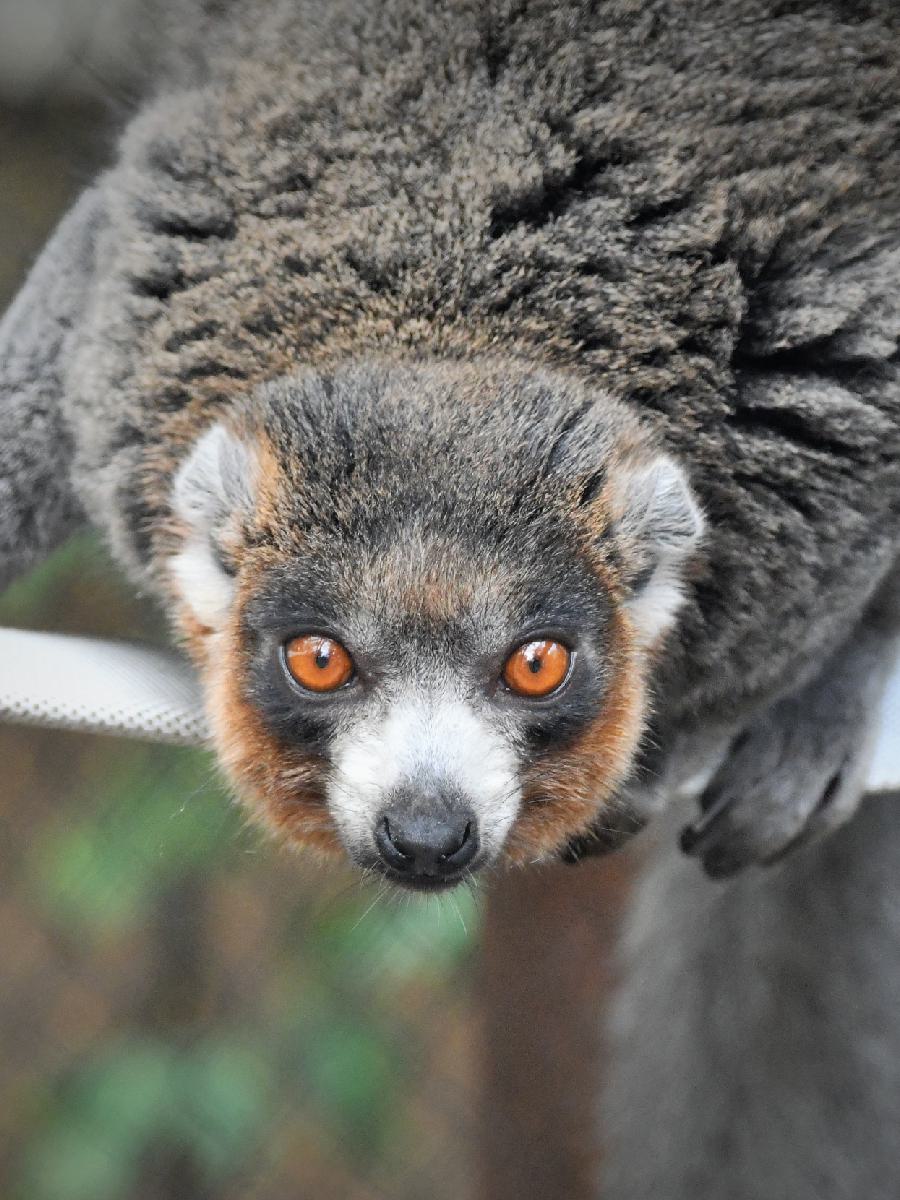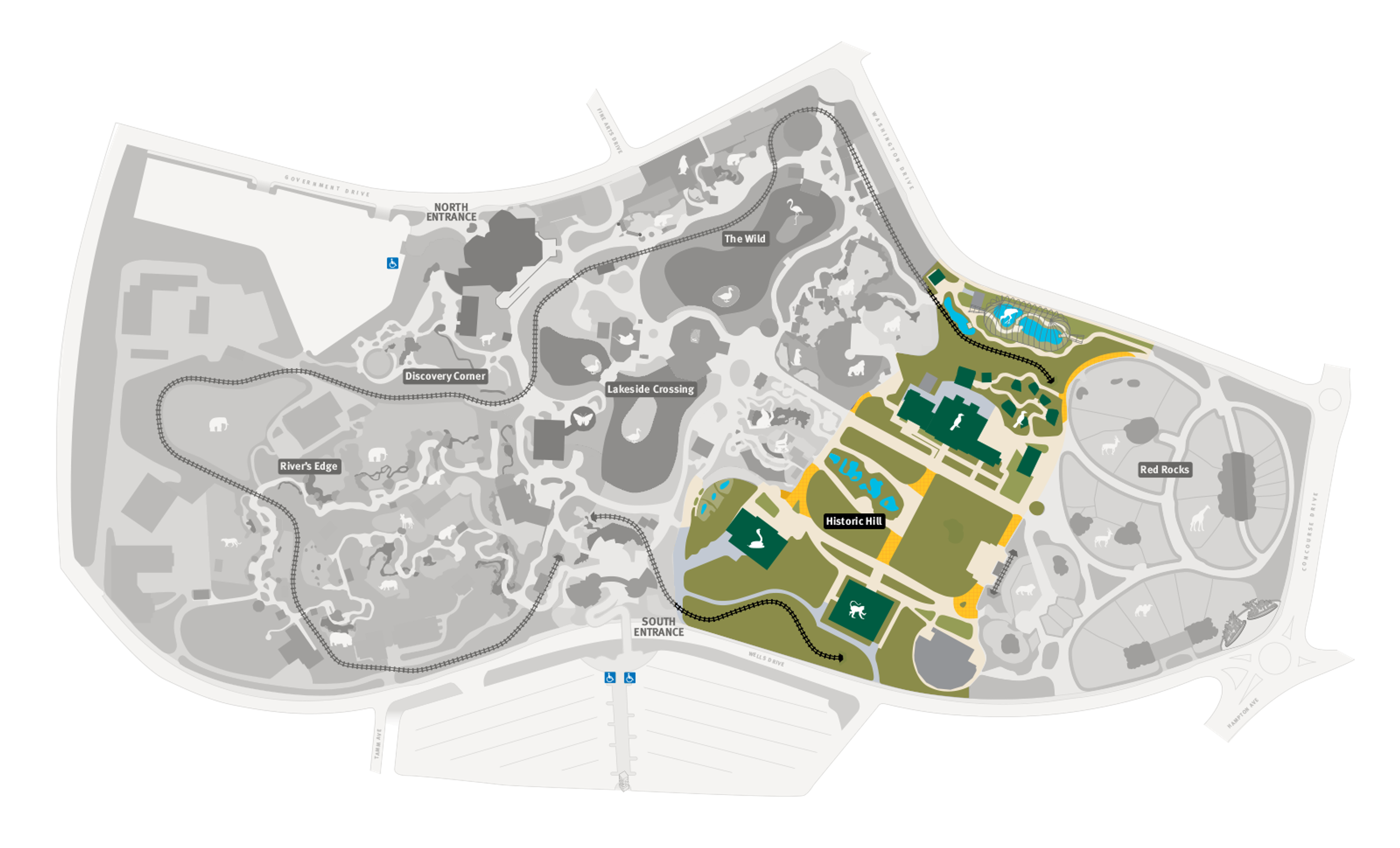
Mongoose Lemur
Eulemur mongoz
Did you know?
- Mongoose lemurs are part of the Lemuridae family, along with other true lemurs.
- They live in dry forests and scrublands in Madagascar.
- They are cathemeral, meaning they may be active day or night, depending on the season.
- They live in family troops.
- A female mongoose lemur generally gives birth to one baby, with twins being very rare.
Social Structures
Mongoose lemurs, like most lemurs, live in troops of a dominant female, a male, and their offspring, though larger groups may occur in some habitats. Unlike some lemur species, male and female mongoose lemurs are easily distinguishable. The females have a white “beard” while the males have a reddish “beard.”
Lemur Conservation
Madagascar’s animal and plant species, including highly endangered lemurs, are found nowhere else in the world. Today, over 95% of the known lemur types are on the brink of extinction. There are four species of lemurs that live at the Zoo. Lemur species range from vulnerable to critically endangered, and all of the lemurs at the Zoo are part of conservation efforts to strengthen their populations.
Threat Level
- Unknown
- Common
- Near Threatened
- Threatened
- Endangered
- Critically Endangered
- Extinct in the Wild
Critically Endangered
The Mongoose Lemur faces an extremely high risk of extinction in the wild.
Range
Northwestern Madagascar
Habitat
Dry forests, scrublands

We care about mongoose lemurs
We support a troop of mongoose lemurs at the Saint Louis Zoo. The Saint Louis Zoo also participates in the Species Survival Plan for mongoose lemurs. This is a cooperative breeding program, with a number of zoos working together to ensure the survival of the species. Learn more about how we are helping lemurs in the wild through the Saint Louis Zoo Center for Conservation in Madagascar.
Find this animal in Historic Hill

SAINT LOUIS ZOO ZONE
Historic Hill
Historic Hill is a lovely stroll through one of the oldest parts of the Saint Louis Zoo. From the 1904 World’s Fair Flight Cage to the Spanish architectural flavor of the 1920s in the Bird House, Primate House and Herpetarium to the finishing touches of our thoroughly modern exhibits, this area of the Zoo has a unique ambiance and a nostalgic history that make it a great destination.

